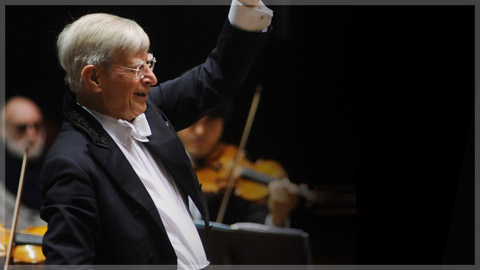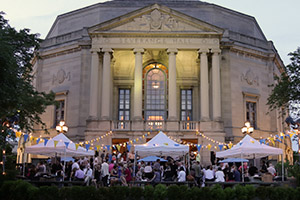by Daniel Hathaway

Spry and wiry at 91, Blomstedt shares some characteristics with other seasoned conductors: he’s well past the point of indulging in podium histrionics, and he doesn’t need to physically demonstrate in performance everything he and the players agreed on in rehearsal. Making minimal gestures, he drew robust, multi-hued tones from the Orchestra one moment and whispering pianissimos the next, winding up outsized jabs at the ensemble only for the most climactic moments.
Though it took the Orchestra a moment or two to settle in after the initial sighing motive in the violins gets answered by downward scales in the winds, Blomstedt set and held a deliberate pace for the opening movement.
Mellifluous horns announced the slow movement, later to be graced by an affecting clarinet solo by Daniel McKelway and a rich cello section statement of the second theme.
The Scherzo was simply explosive, capped off by the cheerful din of Marc Damoulakis’ triangle solos. But the most remarkable movement was the last, a passacaglia where Brahms saved his trombones for the finale just as Beethoven had done in his Fifth. Blomstedt trained a different color of light on each of its 30 variations, singling them out while still allowing the music to move inexorably forward. Among the many sonic highlights was the arresting flute solo by Marisela Seger.

This couldn’t have been an easy end of the week for The Cleveland Orchestra, but Friday evening’s concert ended with an outburst of sheer joy. Hopefully that carried over to Saturday evening’s concert at Blossom, when Blomstedt and the ensemble were due to repeat the Brahms and add Mozart’s “Jupiter” Symphony.
Published on ClevelandClassical.com July 31, 2018.
Click here for a printable copy of this article



